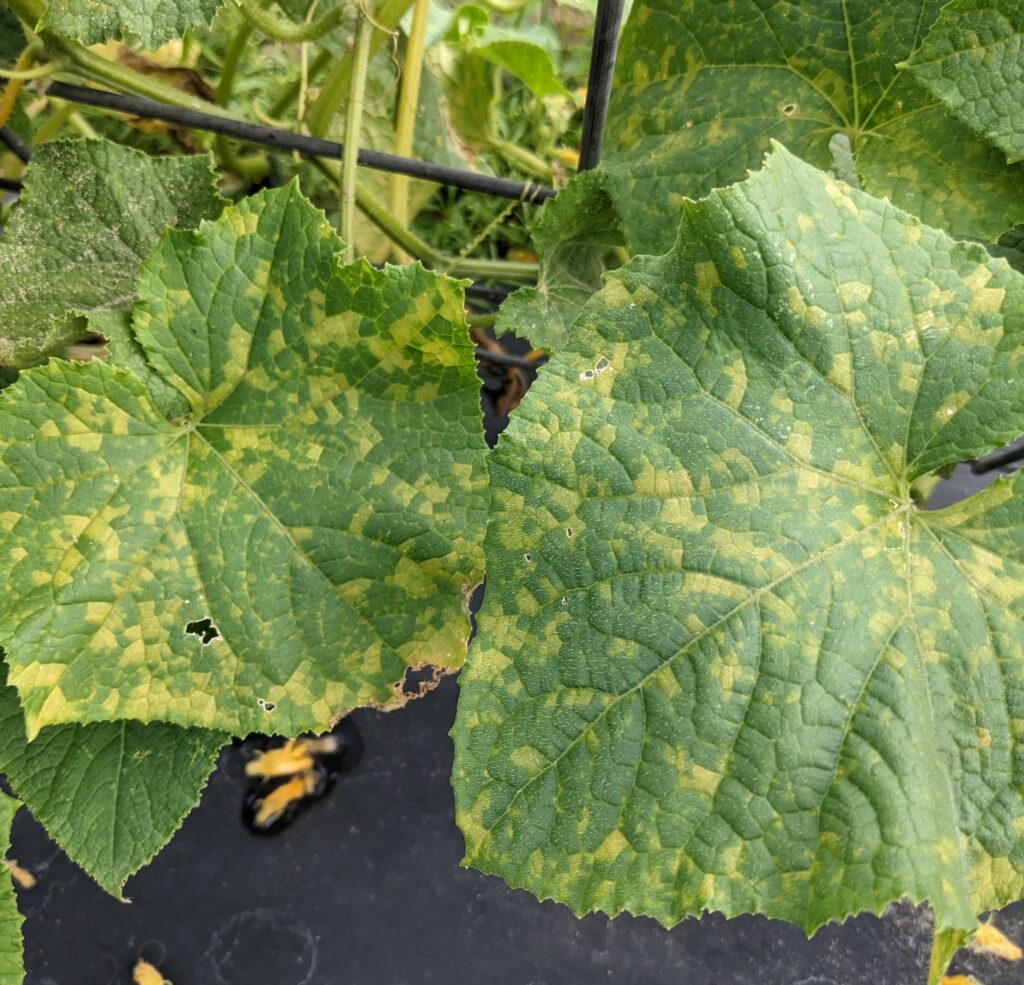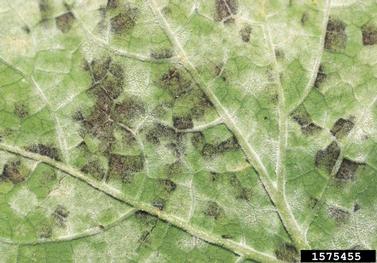Cucurbit Downy Mildew-Confirmed in Henderson County
go.ncsu.edu/readext?475809
en Español / em Português
El inglés es el idioma de control de esta página. En la medida en que haya algún conflicto entre la traducción al inglés y la traducción, el inglés prevalece.
Al hacer clic en el enlace de traducción se activa un servicio de traducción gratuito para convertir la página al español. Al igual que con cualquier traducción por Internet, la conversión no es sensible al contexto y puede que no traduzca el texto en su significado original. NC State Extension no garantiza la exactitud del texto traducido. Por favor, tenga en cuenta que algunas aplicaciones y/o servicios pueden no funcionar como se espera cuando se traducen.
Português
Inglês é o idioma de controle desta página. Na medida que haja algum conflito entre o texto original em Inglês e a tradução, o Inglês prevalece.
Ao clicar no link de tradução, um serviço gratuito de tradução será ativado para converter a página para o Português. Como em qualquer tradução pela internet, a conversão não é sensivel ao contexto e pode não ocorrer a tradução para o significado orginal. O serviço de Extensão da Carolina do Norte (NC State Extension) não garante a exatidão do texto traduzido. Por favor, observe que algumas funções ou serviços podem não funcionar como esperado após a tradução.
English
English is the controlling language of this page. To the extent there is any conflict between the English text and the translation, English controls.
Clicking on the translation link activates a free translation service to convert the page to Spanish. As with any Internet translation, the conversion is not context-sensitive and may not translate the text to its original meaning. NC State Extension does not guarantee the accuracy of the translated text. Please note that some applications and/or services may not function as expected when translated.
Collapse ▲Downy Mildew Management Sprays!
Downy mildew has been found on cucumbers in several WNC counties including Haywood and Henderson. Henderson County has several acres in cucumbers, squash, zuchinni, and pumpkins, therefore growers are strongly encouraged to implement management strategies
See photos of leaf symptoms. Typical symptoms include angular, chlorotic or yellow lesions on the upper surface of the leaves with gray to black spores on the underside of the leaf.

Angular, yellow lesions on topside of the leaves that are bound by leaf veins. Photo by Karen Blaedow

Dark spores of Downy Mildew on underside of leaf. Photo by Gerald Holmes.
| Active ingredient | Example product | Pre-harvest Interval (day) | Fungicide group |
|---|---|---|---|
| Chlorothalonil + oxathiapiprolin | Orondis Opti | 0 | M5+49 |
| Mandipropamid + oxathiapiprolin | Orondis Ultra | 0 | 40+49 |
| Cyazofamid | Ranman 400 SC | 0 | 21 |
| Famoxadone + cymoxanil (Greenhouse) | Tanos 50WG | 3 | 11+27 |
| Chlorothalonil + zoxamide | Zing! | 0 | M5+22 |
| Mancozeb + zoxamide (Greenhouse, Before Disease) | Gavel 75WG | 5 | M+22 |
| Ethaboxam | Elumin 4SC | 2 | 22 |
| Propamocarb (Greenhouse) | Previcur Flex 6F | 2 | 28 |
| Mancozeb (Greenhouse) | Dithane | 5 | M |
| Chlorothalonil | Bravo/Equus/Daconil | 0 | M |




